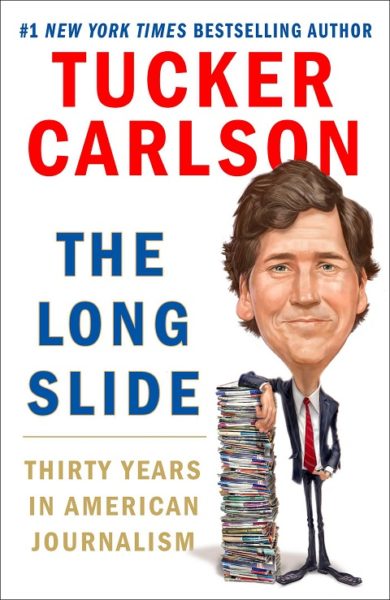Polyus Studios
Published 10 Nov 2021Support me on Patreon – https://www.patreon.com/polyusstudios
In 1954 the Canadian military deployed its first and only icebreaker. With it they would help to secure sovereignty over the Arctic and map the fabled Northwest passage. It was the first deep-draught ship to transit the Northwest Passage and the second vessel ever to accomplish the feat in one season.
HMCS Labrador‘s contributions to opening up sea navigation in Canada’s Arctic were monumental. In four years of operating in dangerous and uncharted waters she never ran aground or was seriously damaged in any way. She explored and charted thousands of kilometres of coastline in some of the least hospitable places in the world. Its faithful helicopters pushed the limits of what was possible with a ship at sea.
While almost forgotten today, HMCS Labrador and her Peasecki HUP-3, and Bell HTL-4 helicopters helped to shape Canadian sovereignty to this day.
0:00 Introduction
0:31 Quest to secure Canadian arctic sovereignty
3:05 HMCS Labrador is built to assert sovereignty over the Arctic
5:19 Bell HTL-4
5:58 Piasecki HUP-3 Retriever
7:12 Deployment history
12:59 HMCS Labrador retired from RCN
13:57 Retirement of HUPs and other uses
14:51 Retirement of HLTs, and other uses
15:17 ConclusionMusic:
Denmark – Portland Cello ProjectResearch Sources:
Footage Sources:
BOLD JOURNEY ROYAL CANADIAN NAVY LABRADOR THROUGH NW PASSAGE – https://youtu.be/B7wOv5s0-F4#Arctic #CanadianAerospace #PolyusStudios
November 23, 2021
Conquering the Arctic: HMCS Labrador and her air wing, the Piasecki HUP-3 Retriever and Bell HTL-4
Tucker Carlson’s new book The Long Slide
Wilfred M. McClay reviews Carlson’s collected essays for First Things:
Tucker Carlson has become such a fixture in the world of cable-television news that it’s easy to forget he began his journalistic career as a writer. And a very good one at that, as this wide-ranging and immensely entertaining selection of essays from the past three decades serves to demonstrate. Carlson’s easygoing, witty, and compulsively readable prose has appeared everywhere from The Weekly Standard (where he was on staff during the nineties) to the New York Times, the Spectator, Forbes, New Republic, Talk, GQ, Esquire, and Politico, which in January 2016 published Carlson’s astonishing and prophetic article titled “Donald Trump is Shocking, Vulgar, and Right”. That essay has been preserved for posterity in these pages, along with twenty-two other pieces, plus a bombshell of an introduction written expressly for the occasion. More of that in a moment.
The first response of many of today’s readers, particularly those who don’t like the tenor of Carlson’s generally right-populist politics or the preppy swagger and bubbly humor of his TV persona, will be to dismiss The Long Slide as an effort to cash in on the author’s current notoriety by recycling old material to make a buck. That was my assumption when I first opened this collection. But the book has an underlying unity, and a serious message. It evokes a bygone age, an era of magazine and newspaper journalism that seems golden in retrospect, and is now so completely gone that one must strain to imagine that it ever existed at all. The simple fact is that almost none of these essays could be published today, certainly not in the same venues: They are full of language and imagery and a certain brisk cheerfulness toward their subject matter that could not possibly pass muster with the Twittering mob of humorless and ignorant moralists who dictate the editorial policies of today’s elite journalism.
Carlson’s writing style reflects the influence of the New Journalists such as Tom Wolfe and Hunter Thompson, who brought a jaunty, whiz-bang you-are-there narrative verve and high-spirited drama to the task of telling vividly detailed stories about unusual people and places, generally relating them in the first person. Carlson’s prose is not as spectacular as Wolfe’s or as thrillingly unhinged as Thompson’s. But it has its own virtues, being crystal clear, conversational, direct, and vigorous, never sending a lardy adjective to do the work of a well-chosen image, and never using gimmicky wild punctuation or stretched-out words to fortify a point. He’s a blue-blazer and button-down-collar guy, not a compulsive wearer of prim white suits or a wigged-out drug gourmand wearing a bucket hat and aviator glasses. But many of Carlson’s writings give the same sense of reporting as an unfolding adventure, a traveling road show revolving around the reactions and experiences of the author himself.
Carlson usually shows a certain fundamental affection for the people he writes about, even if he also ribs or mocks them in some ways. In particular, there is none of that ugly contempt for the “booboisie” and ordinary Americans that one finds, for example, in the pages of H.L. Mencken, and in a great deal of prestige journalism. Instead, he reserves his contempt for the well-heeled know-it-alls who genuinely deserve it. In that sense, the Carlson of these essays does not seem very different from the Carlson of today. He always has been a bit of a traitor to his class, and commendably so.
Canadian Army Newsreel – Baby Flat-Tops Protect Convoys
canmildoc
Published 18 Nov 2012Newsreels shot between 1940 and 1946 by the Canadian Army Film Unit for presentation to servicemen and women. A unique document of Canada’s role in the war on the front lines as well as on the home front.
Tags: Canadian Army Film Unit, Canadian Army, war, World War II, front lines, home front, servicemen, servicewomen, newsreel, military, WWII
QotD: Generation X and the 1990s
When I retired, a retro 1990s fad was just gearing up on campus. It was an Uncanny Valley kind of experience. There they were, dressing like day-glo lumberjacks and listening to knockoff BritPop, but still plodding around campus with that peculiarly late-Millennial affect. You know the one — half secret policeman, half cringing mouse. Unpleasant, but it got me thinking about my own college years back at the dawn of the Clinton Era. We really screwed the pooch, didn’t we?
I’m referring, of course, to Gen X’s patented brand of “irony”. We’ve talked about this before, but here’s a quick recap: Every middle-class kid born after about 1965 was raised to believe that Authenticity was the thing, the only thing. Just do what you feel. Question authority. Don’t listen to The Man!
The problem, of course, is that we were told this by The Man.
It had a weird, telescoping effect. On campus, you were surrounded by people who actually were hippies, plus a whole bunch of wild-eyed fanatics who were sure they would’ve made truly excellent hippies if they hadn’t been in elementary school at the time, plus a bunch of kids — these would be your classmates — who thought of “Woodstock” as a brand name, a kind of backpacking-through-Europe, taking-a-year-off-to-find-myself experience that everyone has as a matter of course before settling down to the serious business of making partner at the law firm.
In short: Our parents were stuck in adolescence, and, being adolescents ourselves, we didn’t understand that “Rebellion” wasn’t something the hippies invented. We wanted to experience sex, drugs, and rock’n’roll, too, but since the Baby Boomers treated those as their exclusive property instead of what they actually are — i.e. the natural impulses of teenagers in all times and places — we had to be all, like, you know, whatever about it. […]
That was the 1990s. Faced with a paradox that everything your parents say, do, and believe is lame — according to your parents! — the only safe way is to make sure nobody can figure out exactly what your attitude is at any given instant. You might end up working 90 hour weeks at the office to pay the nut on the McMansion and the Volvo the same way they did, but at least you’d be, you know, ironic about it. The ketman of the suburbs.
See what happens when you listen to your elders, kids?
Severian, “The Virtue of Hypocrisy”, Rotten Chestnuts, 2019-01-19.






